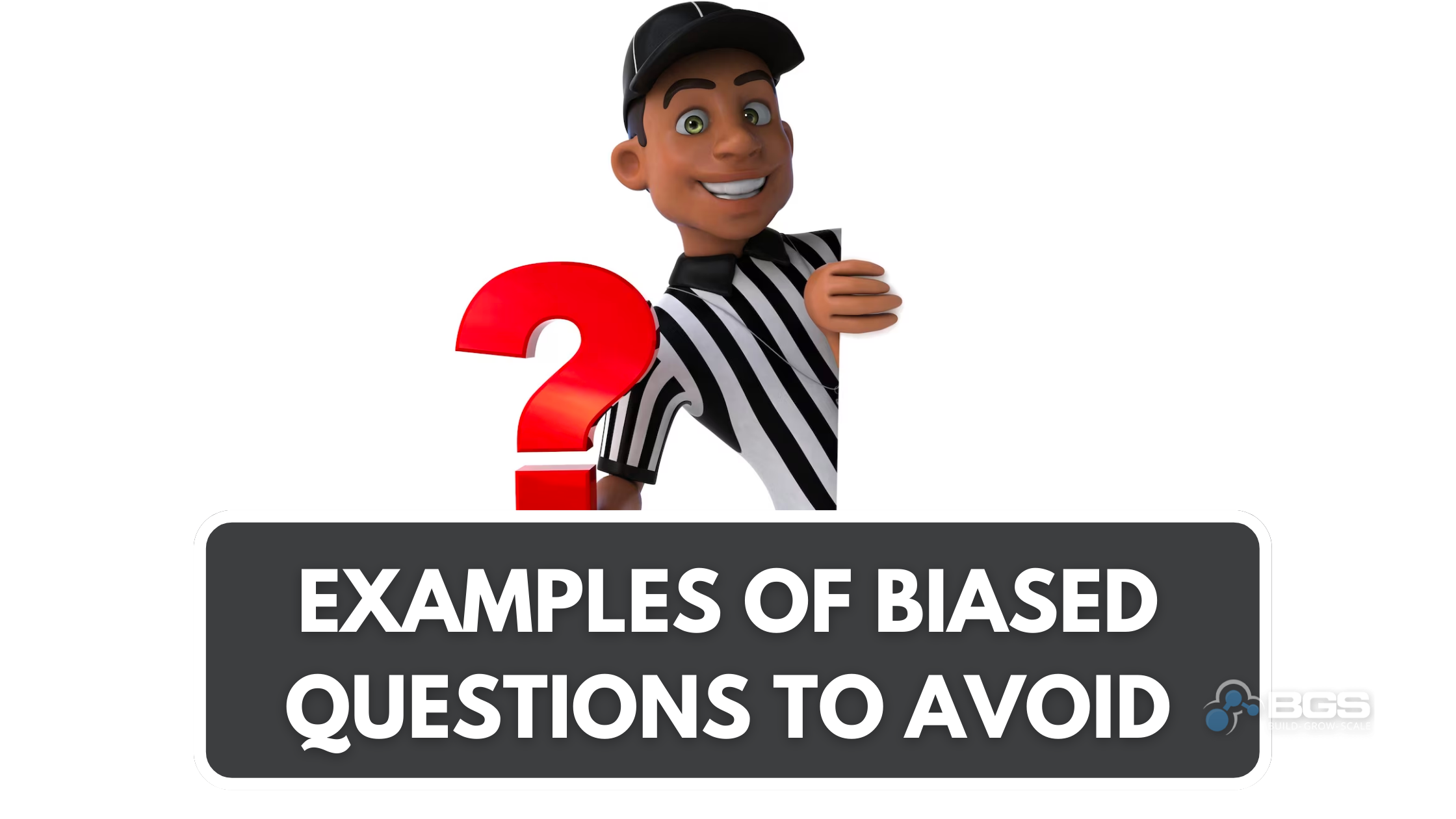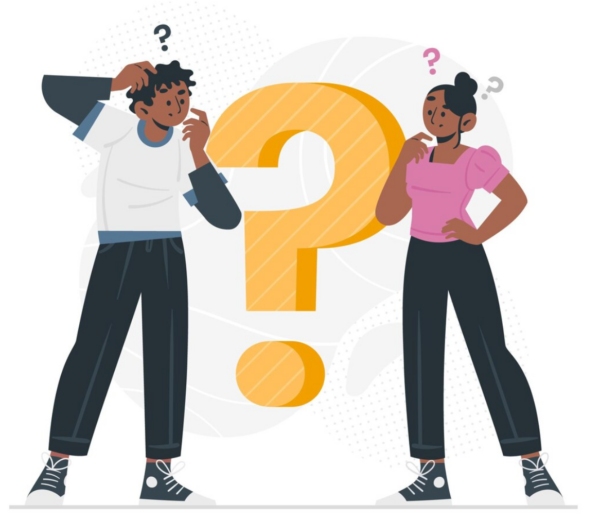9 Examples of Biased Questions to Avoid When Conducting a Survey on Your Ecommerce Store Customers

Dolly Tomas | Sep 02, 2023
Reading Time: 5 minutesAre you seeking accurate and unbiased feedback from your ecommerce store customers? Then it’s crucial to avoid asking biased questions that could potentially sway their responses. In this article, we will explore ten examples of biased questions to avoid when conducting surveys. By being aware of these pitfalls, you can ensure that your survey results provide valuable insights into your customers’ preferences and experiences.
So let’s dive in and learn to ask the right questions for unbiased data by reviewing some examples of biased questions to avoid!
The Influence Question
The Influence Question asks customers if they were influenced by any external factors when making a purchase. It is important to avoid asking this question in a biased manner to ensure accurate responses.
Instead of asking, ‘Were you influenced by any external factors when making your purchase?’ try asking, ‘What factors influenced your decision to make this purchase?’
This revised question allows customers to provide a more open and honest response without leading them to a specific answer.
By using this approach, you can gather valuable insights into the various factors that influence customers’ purchasing decisions.
The Loaded Question
Loaded questions can skew survey results and provide biased information. When crafting your survey questions, it’s important to be mindful of loaded questions that may lead respondents to a particular answer or assumption.
These questions contain embedded assumptions or presuppositions that can subtly influence the respondent’s response. For example, asking, ‘Don’t you agree that our products are the best on the market?’ assumes that the products are indeed the best, potentially leading customers to respond positively regardless of their true opinion.
Similarly, asking ‘How often do you experience our exceptional customer service?’ assumes that the customer service is exceptional, potentially biasing the responses.
To avoid this, ensure your questions are neutral and objective, allowing respondents to provide honest opinions without being influenced by loaded language or presuppositions.
The Leading Question
Crafting neutral and objective survey questions is crucial in obtaining unbiased responses. One type of biased question to avoid is the leading question. This type of question is designed to guide respondents towards a particular answer or to influence their opinion.
For example, asking, ‘Don’t you agree that our ecommerce store provides the best customer service?’ implies that the store indeed offers superior customer service. This can lead to biased responses and inaccurate data.
Instead, focus on asking open-ended questions allowing customers to express their opinions without any external influence. For instance, asking, ‘How would you rate the customer service you received from our ecommerce store?’ allows respondents to provide their own unbiased feedback.
The Double-Barreled Question
Be cautious of double-barreled questions, which can lead to confusion and inaccurate data.
A double-barreled question is one that combines two separate questions into one, making it difficult for respondents to provide a clear and accurate response.
For example, asking ‘Do you enjoy shopping online and find it convenient?’ assumes that the respondent enjoys shopping online and finds it convenient, even if it may not be the case.
This type of question leaves no room for respondents to express their true opinions on each separate aspect.
When conducting a survey on your ecommerce store customers, it is crucial to ask clear and concise questions that address one specific topic at a time.
The Biased Language Question
Using biased language in survey questions can lead to skewed and unreliable data.
When creating a survey for your ecommerce store customers, it is crucial to avoid using biased language that may influence their responses.
Biased language can subtly sway respondents towards a particular answer, compromising the integrity of the data collected.
For example, instead of asking, ‘Don’t you think our prices are too high?’, a more neutral and unbiased question would be, ‘How would you rate the pricing of our products?’
By phrasing questions in an unbiased manner, you allow respondents to provide honest and accurate feedback.
This ensures that the data collected truly reflects their opinions and experiences, enabling you to make informed business decisions based on reliable information.
The Disguised Opinion Question
Make sure to phrase your survey questions in a way that doesn’t reveal your own opinion, as this can influence how respondents answer. The disguised opinion question is a common pitfall to avoid when conducting surveys.
These questions subtly convey the survey creator’s personal bias or opinion, leading respondents to answer in a way that aligns with that bias.
For example, instead of asking, ‘Don’t you think our prices are too high?’ which assumes that the prices are indeed high, ask a neutral question like, ‘How would you rate the pricing of our products?’
This allows respondents to provide their own unbiased opinions. By avoiding disguised opinion questions, you can obtain more accurate and unbiased data, leading to better insights and decision-making for your ecommerce store.
The Social Desirability Bias Question
The social desirability bias question can influence you to provide answers that you believe are socially acceptable rather than your true opinions. This bias occurs when survey questions are framed to encourage respondents to provide answers that are seen as more favorable or socially desirable.
For example, if a question asks, ‘Do you always recycle to protect the environment?’ you may feel pressured to say yes, even if you don’t always recycle. This bias can lead to inaccurate data and insights, as respondents may feel uncomfortable being honest about their true behaviors or opinions.
To avoid this bias, using neutral language and avoiding leading or judgmental questions is important. Remember, honest and authentic responses are key to gathering meaningful data.
The Order Bias Question
When answering order bias questions, you may unknowingly be influenced by the order in which the options are presented. This bias occurs when the sequence of choices affects your decision-making process.
For example, if the options are listed from most favorable to least favorable, you may be more inclined to choose the first option, even if it may not fit your preferences or opinions. On the other hand, if the options are presented from least favorable to most favorable, you may be more likely to choose the last option.
This bias can significantly impact survey results and lead to inaccurate data. To avoid order bias, survey creators should randomize the order in which options are presented or use a balanced approach, where options are equally distributed across different positions.
The Exclusionary Question
Now that you understand the importance of avoiding biased questions that can influence your customers’ responses let’s discuss another type of biased question to steer clear of: the exclusionary question.
This type of question excludes certain groups or individuals from providing their input, potentially skewing the results. For example, asking ‘Are you a frequent shopper at our store?’ assumes that all respondents have shopped with you before, leaving out those who may be new customers.
To ensure an inclusive survey, rephrase the question as ‘How often do you shop at our store?’ This way, you allow all customers to participate and provide valuable feedback regardless of their shopping frequency.
Final thoughts: Examples of biased questions to avoid
Now that you are aware of some examples of biased questions to avoid, you understand that, when conducting a survey on your ecommerce store customers, it’s crucial to avoid biased questions that may influence or manipulate their responses.
Biased questions can lead to inaccurate data and hinder the decision-making process.
By being aware of and avoiding the various types of biased questions, such as loaded or leading questions, you can ensure that your survey provides reliable and unbiased insights into your customers’ opinions and preferences.
This will ultimately help you make informed decisions to improve your ecommerce store and enhance customer satisfaction.



Table of Contents
The Influence QuestionThe Loaded QuestionThe Leading QuestionThe Double-Barreled QuestionThe Biased Language QuestionThe Disguised Opinion QuestionThe Social Desirability Bias QuestionThe Order Bias QuestionThe Exclusionary QuestionFinal thoughts: Examples of biased questions to avoidTable of ContentsAbout the authorLeave a Comment Cancel ReplyAbout the author
Dolly Tomas
Dolly, Revenue Optimization Expert at Build Grow Scale! With a wealth of experience in eCommerce and an extensive background in Customer Service as an Operations Manager, Team Leader, and Project Manager, she's got the secret sauce to boost your bottom line. Armed with a Bachelor's degree in Electronics and Communications Engineering, she's a master of numbers and problem-solving. Balancing her professional achievements with her cherished role as a devoted mother to two cute kiddos, Dolly shows her unwavering commitment to driving revenue growth and her ability to navigate complex challenges make her an invaluable asset to any organization.




